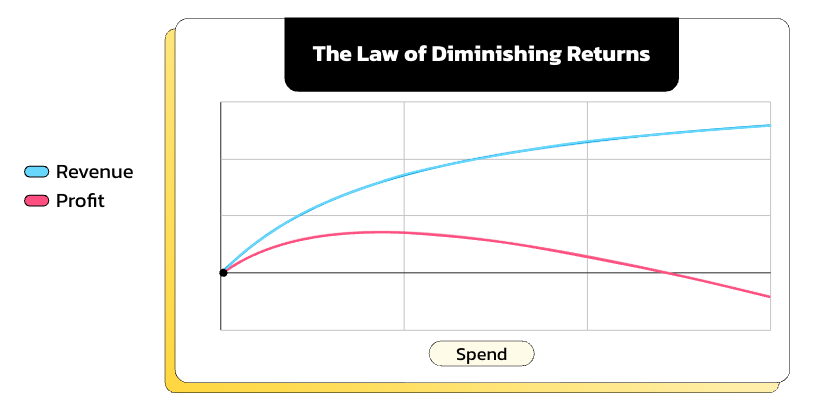Do you want to know my least favourite phrase in all of professional life?
“Be strategic, not tactical.”
I heard this a lot during the early stages of my career. On the face of it, it seems like a sufficiently straightforward and well-meaning piece of advice, from one senior employee to another, less-senior colleague. But coming away from those conversations, I realised they always left me wanting a little bit more.
In particular, I’d find myself asking:
- What’s the difference between strategy and tactics?
- Don’t we want to be both strategic and tactical?
- Hang on a minute… do you even know the difference between the two?
In many cases, I suspect the (honest) answer to that last question would have been a sheepish “no”.
And that’s because the distinction between strategy isn’t an easy concept to grasp – and we shouldn’t pretend that it is.
This fuzziness becomes even more pronounced when applied to my discipline – the realm of paid search. The term paid search strategy gets thrown around liberally, but if you were to ask ten PPC professionals what it means, you’d get ten different answers. (Trust me on this one; I have tried.)
So what I’ve been pondering is: does paid search strategy even exist? And if it does, what is It?
Let’s explore.
Does Paid Search Strategy Exist? The Case Against
Some marketers—perhaps the majority—might argue that paid search strategy is a contradiction in terms.
Take Mark Ritson, an undisputed heavyweight in the marketing world. He teaches a “classical” model of marketing strategy, in which strategy is the answer to three foundational questions:
- Who are we targeting? Note that this is not “which audiences or keywords are we targeting in our media?”, but rather is the bigger question of “which customers is our business aiming to serve?”
- How are we positioned? What are the associations and attributes that we want to come to mind in our target customer, whenever they think of our brand?
- What are our objectives? By positioning in this specific way to this specific target segment, what do we want to achieve? Which KPIs do we want to shift, by how much, and in what timeframe?
In Mark’s world, the sum total of strategy is the answer to these three questions alone. It’s nothing more, and nothing less.
According to this model, once those strategic questions have been answered, we’d then be in a position to move on to tactics, which are the levers we can pull to execute that strategy in the market. Tactics span the product that we develop, the price we charge for it, where we choose to sell it, and the advertising and media that we deploy to promote it.
But paid search is just one of many channels within the media ecosystem, so by definition it is a tactic only – and any genuine strategic thought must have already been wrapped up by the time we get on to talking about media channels. By this logic, it follows not only that “paid search strategy” can’t exist, but nor could other strategic sub-variants such as “creative strategy”, or “SEO strategy”, or “content strategy”. Pretty convincing, if you ask me.
Does Paid Search Strategy Exist? The Case For
That’s not the end of the debate though – there are other perspectives we can consider. Another important voice in the conversation comes from Roger Martin, one of the most successful & influential thinkers in the world of corporate strategy.
Martin defines strategy as:
“A set of interconnected decisions that hypothesize how you’re going to win.”
That’s it. No three-question framework. No predefined path from strategy to tactics. Just an abstract set of choices that, taken together, form a theory for success.
This definition of strategy is a much broader one – and it’s that breadth that gives us some wiggle room to carve out a potential definition for “paid search strategy”.
So what could Paid Search Strategy be?
If we accept Roger Martin’s definition, then we can move on to asking: what actually are the decisions to be made in the paid search discipline, which we could class as strategic?
There are some candidates we can instantly rule out. For instance: “Our strategy is to constantly optimise our ad copy, and to test the latest features and betas”. Whilst we technically do have to decide to do these things, it’s so trivially straightforward that we should be doing them, that we can’t consider it to be a strategic question.
After all, strategy only hypothesizes how we are going to win; it can’t make any guarantees, or be proven in advance. A key facet of any strategic decision is that it should be a painful one to make; it must involve selective choice about which path we will follow, at the expense of all other options. If you ask me, choosing to optimise your ad copy shouldn’t feel particularly painful.
I make the case that there are two decisions in paid search that we can feasibly classify as being strategic.
1. KPI Setting: Choosing What to Optimize For
This might feel simple, but it isn’t. There are lots of metrics that a business might genuinely care about, but in paid search, you can only truly optimise around one of them.
Imagine, for instance, that you’re an omnichannel retailer. You might say:
- “We care about profitability first and foremost. Of all our distribution channels, selling via our website is most profitable, so we should run campaigns that drive traffic online – and whilst we’re at it, we’ll feed profitability data into our bid strategies to optimise around.”
- Or, you might say: “We care most about our overall market share. We therefore need to support both in-store and online journeys, so should run a combination of campaigns optimising to each of these two outcomes.”
- Or, you might say: “We need to improve our lifetime value and repeat-purchase rates. App buyers have the highest LTV, so we should set up features such as web-to-app-connect, and syphon off some of our budget for app install campaigns.”
Each of these KPI choices provides us with very clear guidance as to how we should set up our campaigns to deliver upon these KPIs. But crucially, they are mutually exclusive options—you can’t do all three at once.
Choosing which one matters most to you is not tactical; it’s a strategic decision about what success looks like for you. And once made, this choice informs every downstream decision in campaign management.
2. Budget Setting: Navigating the Diminishing Returns Curve
Once you’ve chosen your KPI, a question that should always follow closely is how much we should spend in service of that KPI.
You cannot – I repeat, cannot – make an informed choice on this question without thinking about how the diminishing returns curve looks for your account. Whilst the exact parameters of the curve will vary for each account, the general shape looks the same for every single advertiser – something like this:

As spend increases, so does revenue – but it does so at a diminishing rate. Because of this phenomenon, you always eventually reach a stage beyond which spending more results in a reduction in profitability for the channel.
I’d argue that the decision of “where on the curve should we play” is the most criminally-overlooked decision amongst paid search marketers.
Many advertisers I speak to will begin by saying things like “we spend to break even because we want to maximise growth” – but when you probe a little deeper, it becomes less clear whether they’ve properly considered the full spectrum of revenue & profit options available to them. More often than not, advertisers somewhat stumble into this decision on auto-pilot.
To be clear, this is not an easy decision to make: it involves intentional choice, not to mention having access to some relatively robust forecasting capabilities. But it’s a decision that we need to be obsessing over, and in my mind, it absolutely passes the Roger Martin litmus test of “does this count as strategy”.
Closing Thoughts
If you walk away from this blog and think, “Actually, I’m in Ritson’s camp – paid search strategy doesn’t exist”, then that’s okay. As someone who’s spent my entire career working in the channel, I’d quite like to think my job provides me the platform to engage in strategic thought every once in a while – but if it doesn’t, then it won’t be the end of the world.
But if like me you think there’s a strong case that the PPC manager can partake in more important strategic decisions, then I’m on your side – it’s just that paid search strategy doesn’t look like what most blog posts would have you believe.
It’s not checklists. It’s not hacks. It’s not best practices. It’s about deciding what is actually valuable for your business, and making commercially-informed trade-offs between revenue and profit. And I say we stand to gain an awful lot by spending more of our time thinking about these two things.
Andy Goodwin is Head of Paid Search at Brainlabs. This article is based on a talk he gave at Hero Conf UK in April 2025.




